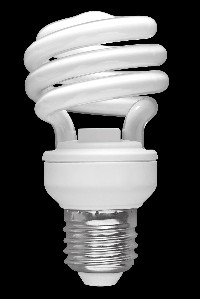Researchers from Empa, the Swiss Federal Laboratories for Materials Testing and Research in Duebendorf, studied the full lifetime of four lighting technologies, and found compact fluorescent lighting (CFL) to inflict the least environmental damage. The analysis includes consideration of CFL’s mercury content, since exposure to elemental mercury when absorbed through the lungs can cause neurological problems, particularly among young children.
The Empa researchers investigated four types of electrical lighting: classic incandescent bulbs, halogen lamps, fluorescent tubes, and CFL. To evaluate the total impact of a lamp on the environment, the researchers analyzed the full life cycle for each, including the raw material and energy consumption of a lamp during its complete lifetime, from initial production to usage to final disposal. The Empa team calculated “eco-indicator points” for each lighting method, with the total number of points measuring the total damage the product inflicts on human health and the environment, as well as the consumption of resources during its manufacture.
The researchers found the simpler design of incandescent bulbs makes them less environmentally harmful at the outset. But with their higher consumption of electrical power, generated mainly by coal-fired plants in Europe (also the main source of electric power in the U.S.), the environmental harm caused by incandescent bulbs increased rapidly compared to the other technologies, particularly CFL.
CFL won out in the Empa analysis, not only because of its lower energy consumption, but also because of its longer lifetime of about 10,000 hours for a typical CFL bulb — compared to 1,000 hours for an incandescent bulb. The researchers found as well that the environmental cost of potential mercury exposure from CFL bulb disposal to be negligible, a risk reduced even further by recycling.
The Empa findings are published in the journal Environmental Impact Assessment Review (paid subscription required).


 RSS - Posts
RSS - Posts
You must be logged in to post a comment.